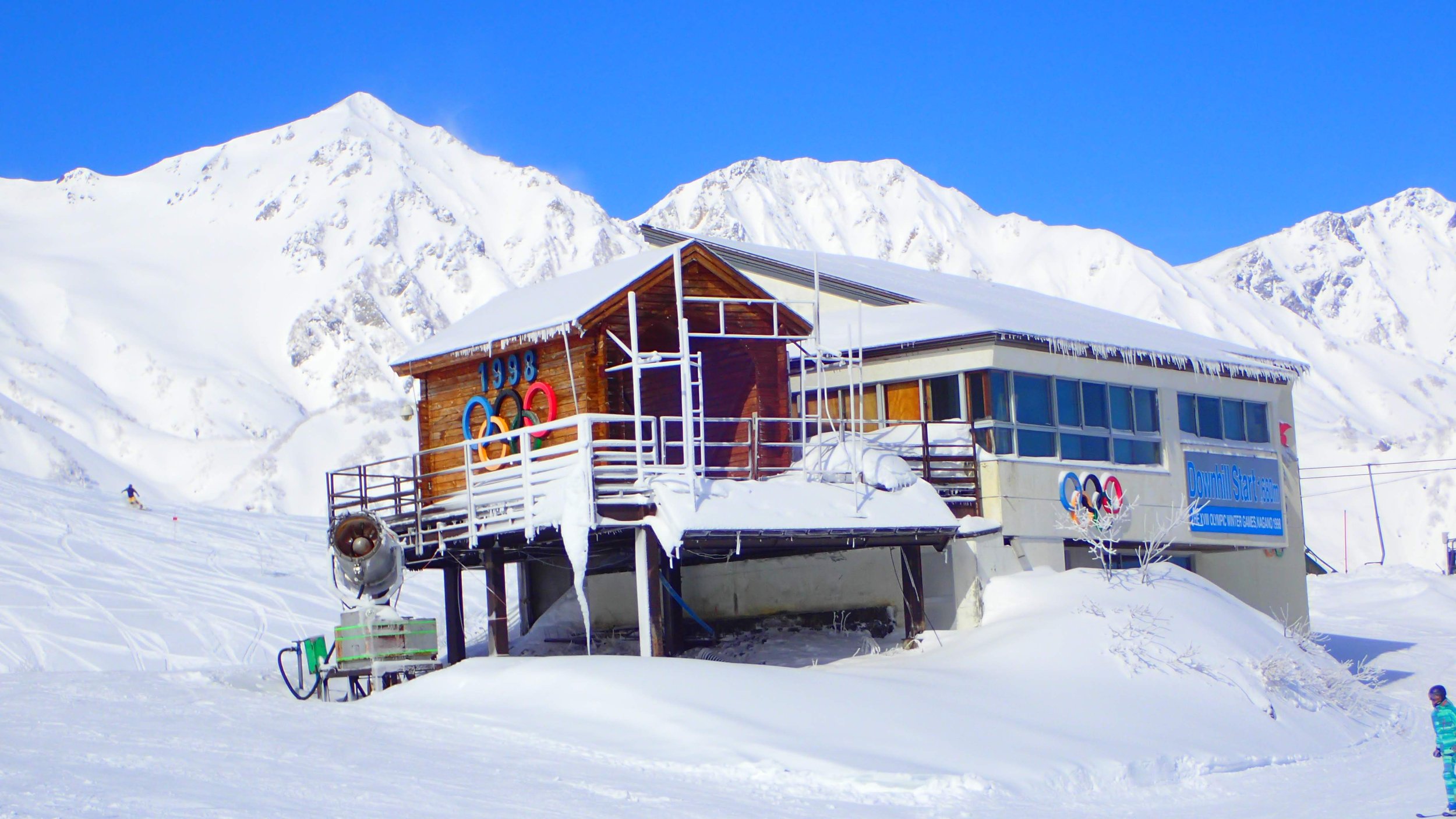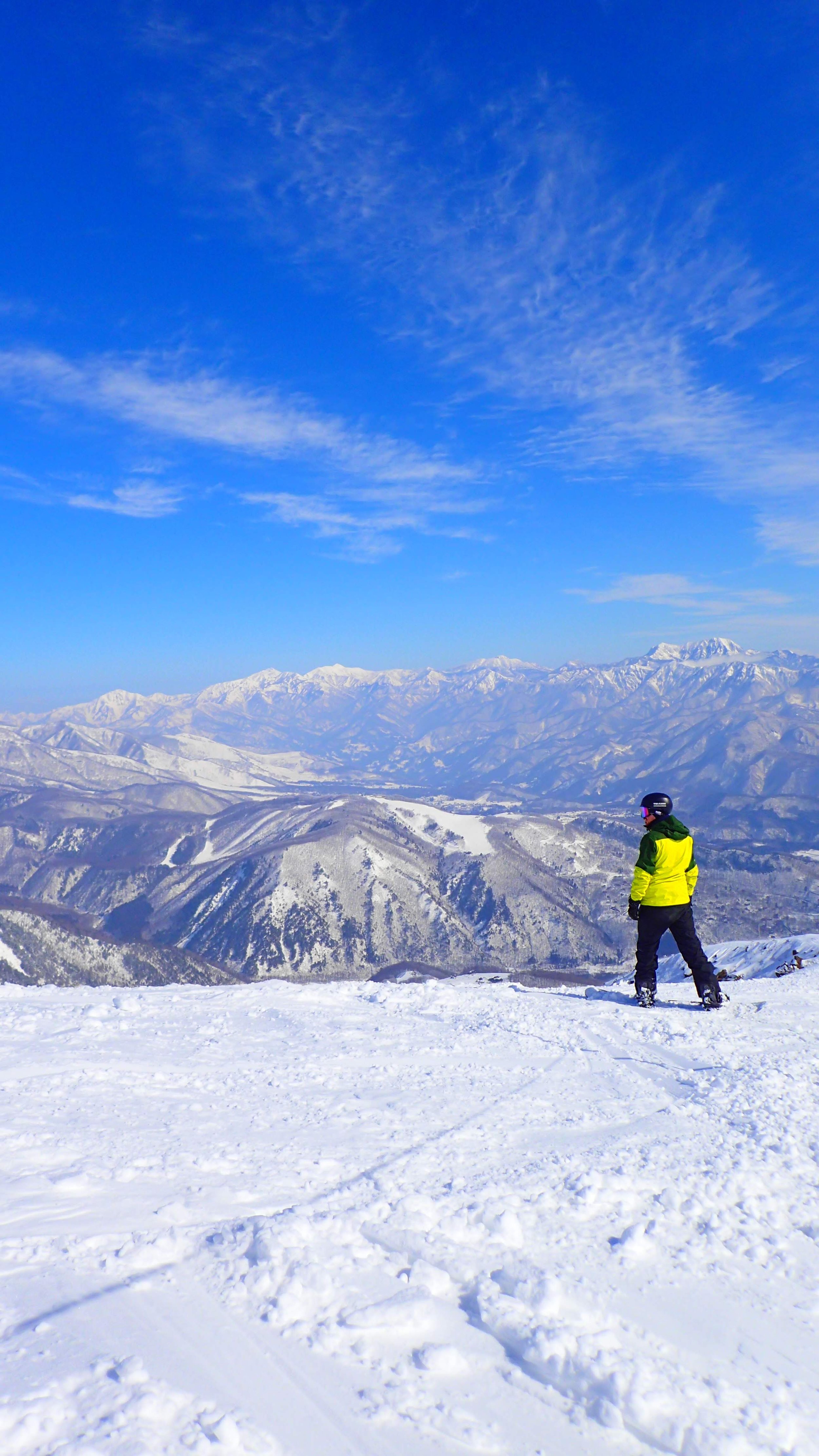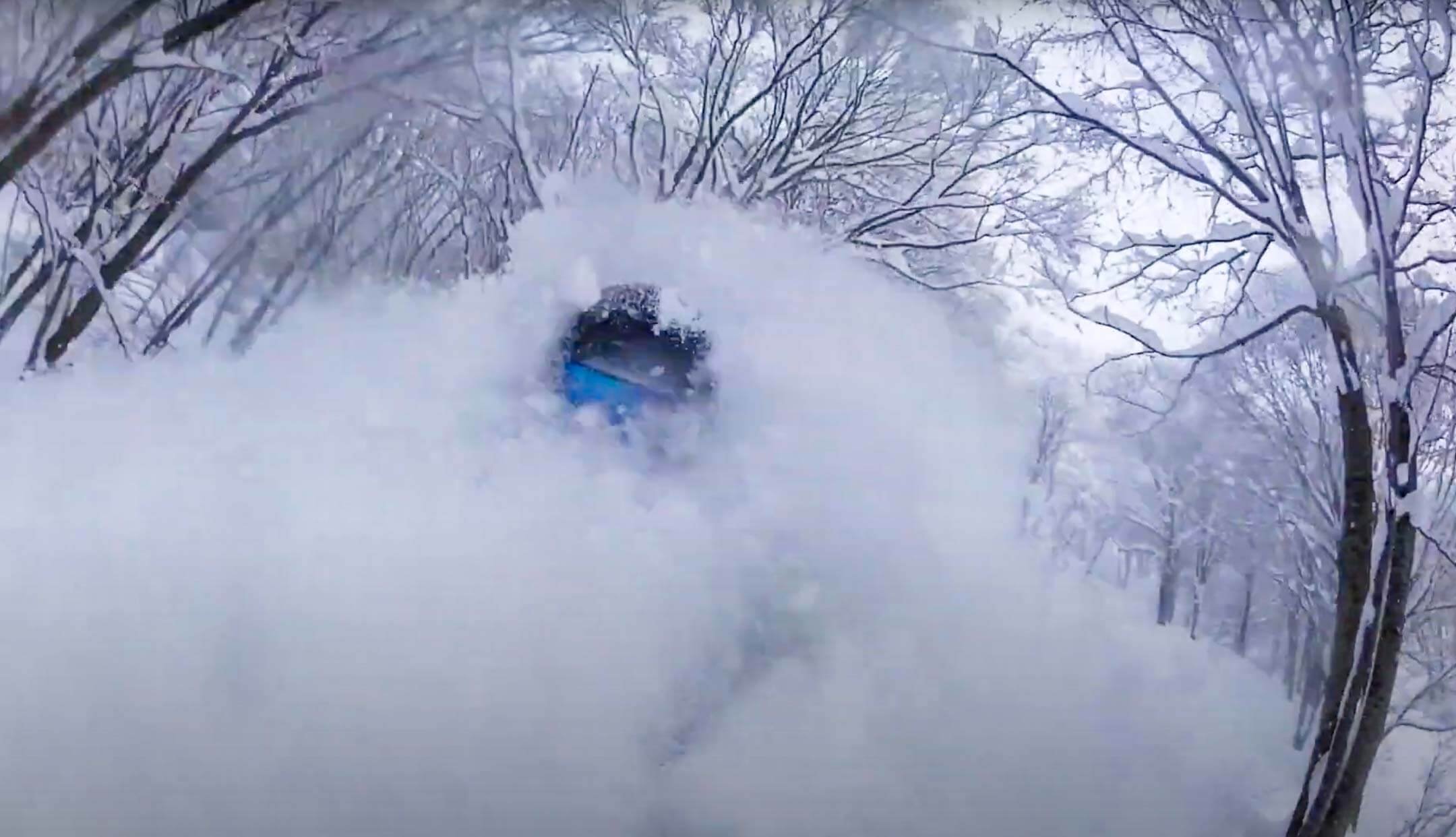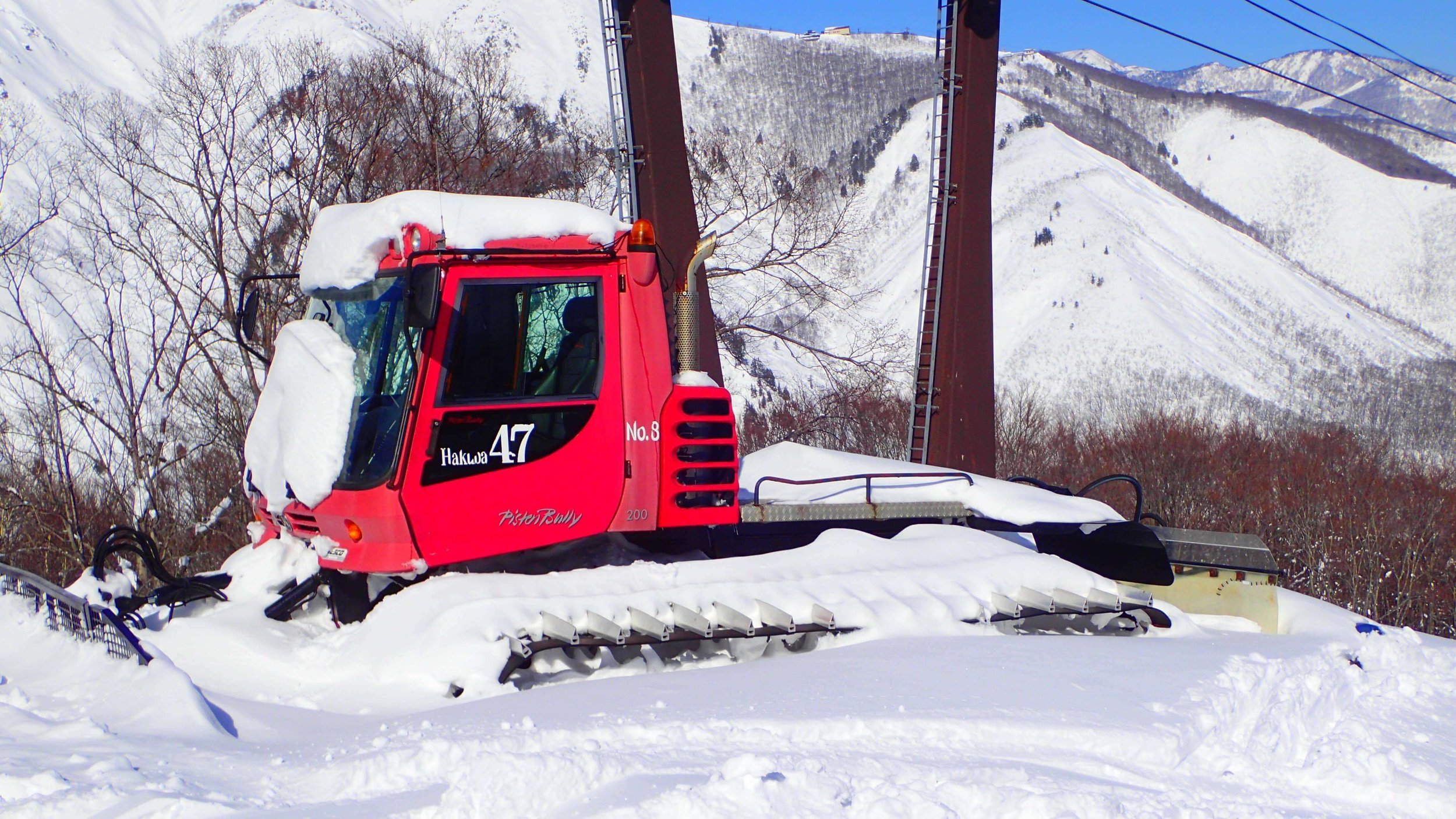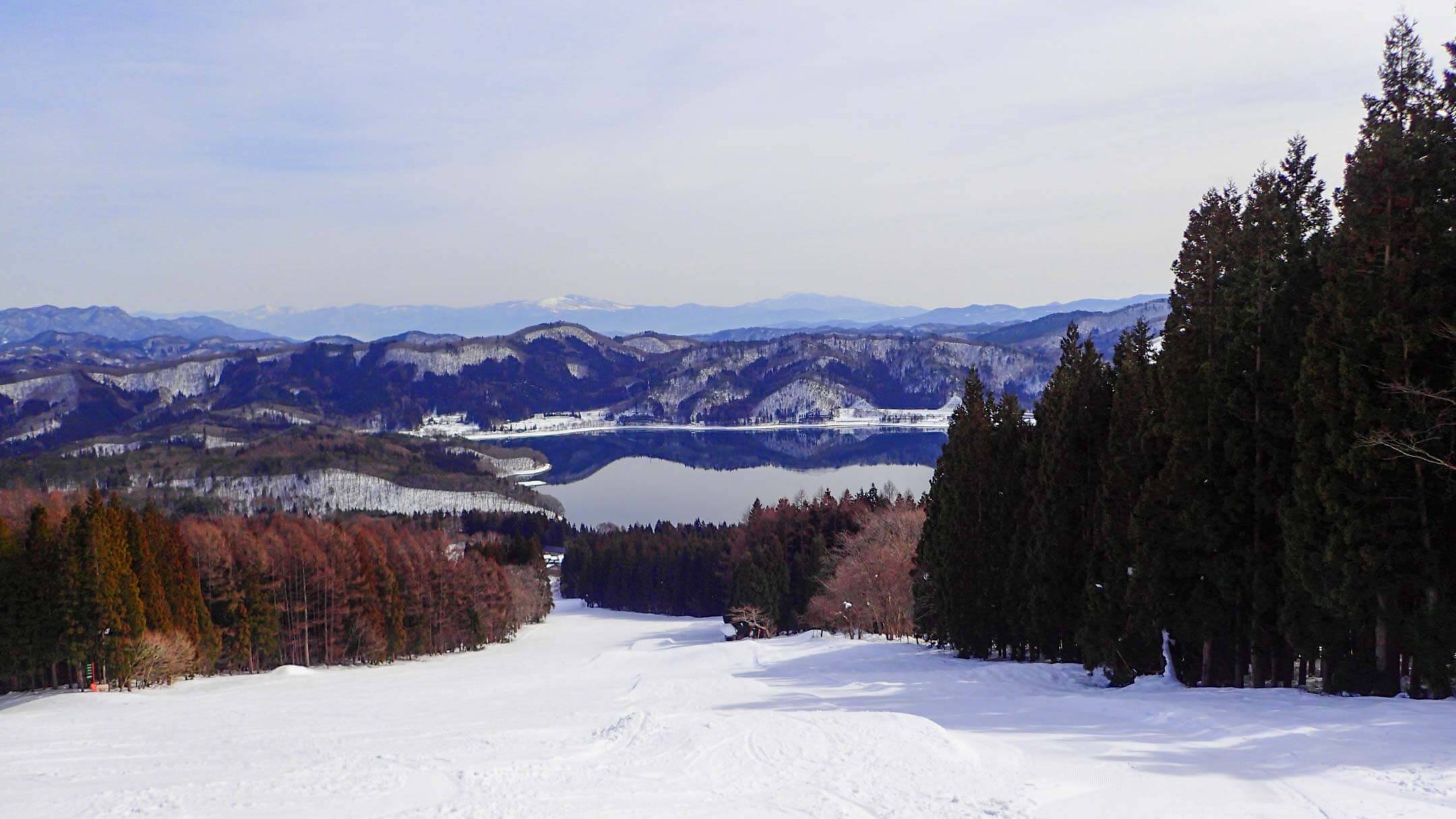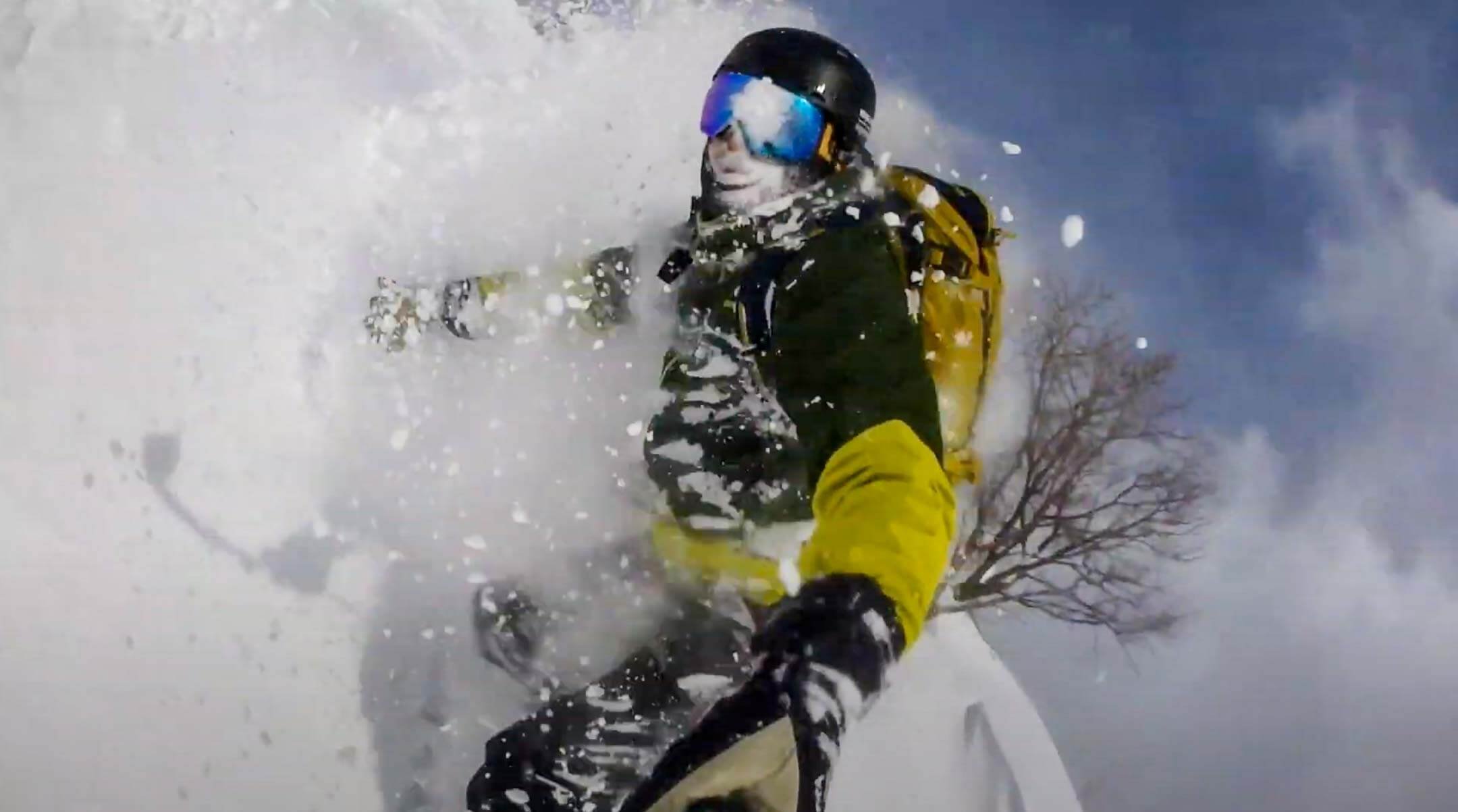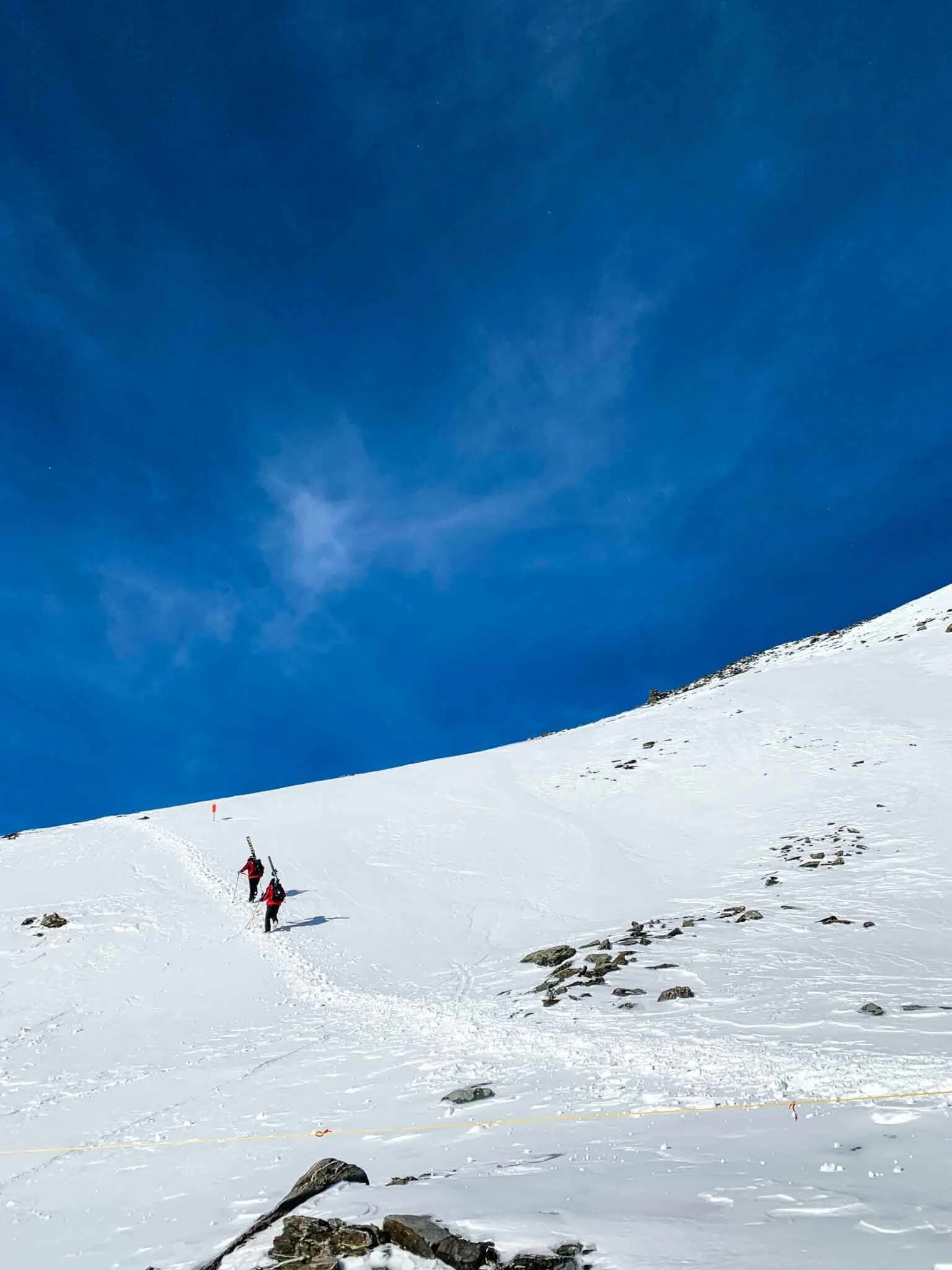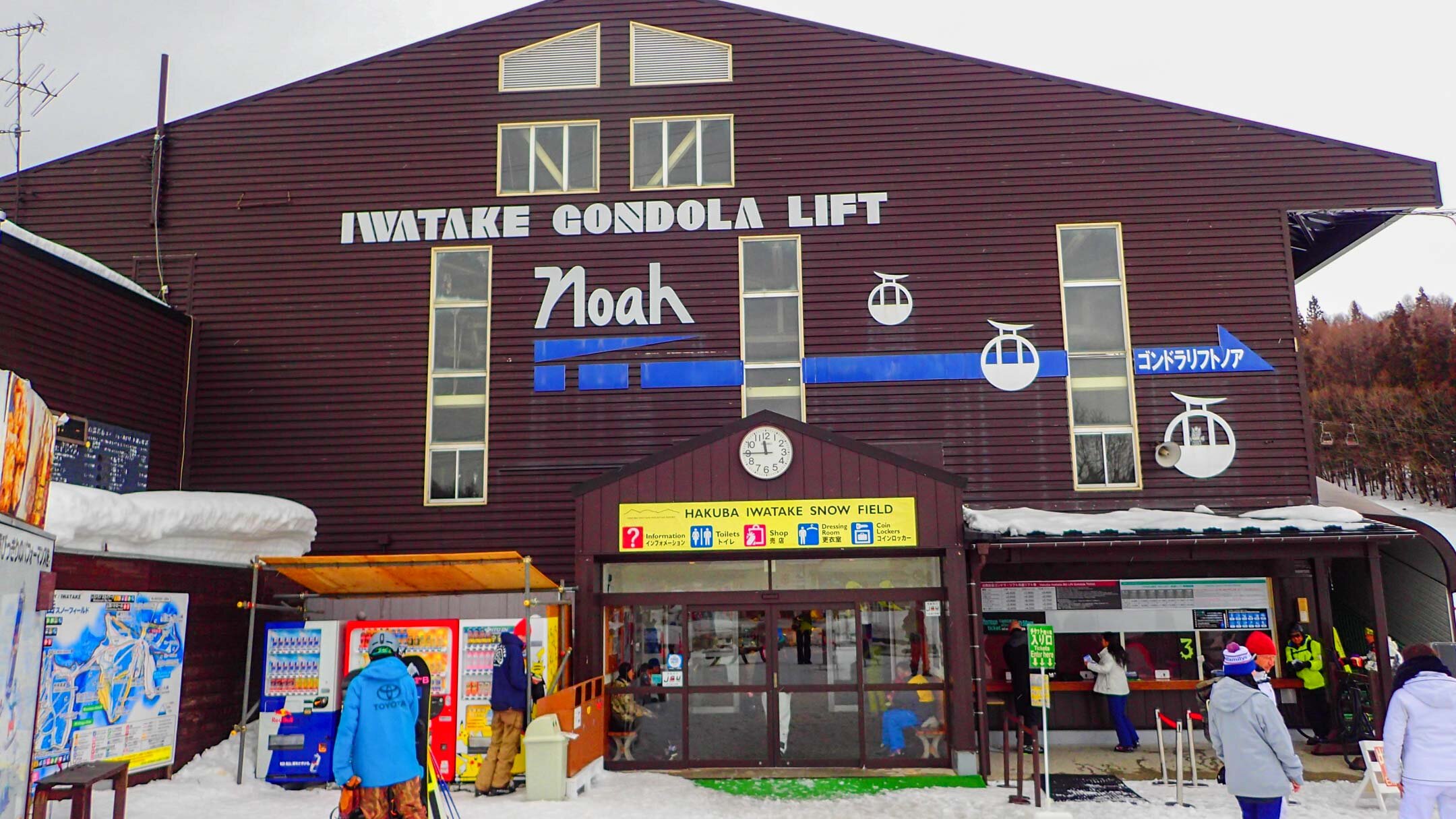A Guide To Snowboarding In Japan
Japan quite simply is a snowboarding trip like no other. If the idea of perfect trees, untouched powder and unwinding in an onsen sounds like your dream, well you can live it in Japan! Japan is a mix of the best skiing you are likely to experience and a cultural holiday in a country that is full of surprises. Everything from endless snowfall to the stunning Japanese Alps and a journey on a bullet train make Japan a place every skier and snowboarder should visit.
Skiing and snowboarding in Japan is amongst the best powder skiing in the world. Known worldwide for the copious amounts of snowfall falling between December and March, Japan is the perfect powder ski trip. What makes snowboarding in Japan even better? The trees! In Japan, you will discover glade skiing unlike elsewhere in the world. Regulars to Japan will speak of the incredible snow conditions with resorts receiving upwards of 10m of snowfall. Some Japanese ski resorts even report DOUBLE that. Regular big dumps of snow are expected during late January and February so these are great months to plan your visit. What’s more, Japanese snow is incredibly light and dry making it perfect for throwing up into those face shots.
Skiing and snowboarding in Japan is split between the North and South islands. Hokkaido on the North Island is where people head in search of major powder stashes. The ski resorts of Niseko and Rusutsu are probably the most popular resorts in the north of Japan with copious amounts of snow falling between January and March. Niseko is very popular with tourists and if you prefer a quiet resort vibe Japan always has some smaller local resorts to explore.
The South Island offers skiing within a few hour’s train ride from Tokyo airport with Hakuba being amongst the most popular. The Hakuba Valley is a combination of ten ski resorts that are all available on the same lift pass. Each resort offers something different, from Happo One (former Olympic hosts), Sanosaka (a small local resort with no crowds) and Tsugaike (some of the best tree skiing). Away from Hakuba, the resorts of Myoko, Shiga Kogen and Nozawa Onsen are gaining popularity.
Japanese ski resorts are not just about powder laps through the trees….there is also a big freestyle scene. Terrain parks in Japan are well thought out with a good range of features. One example is Hakuba 47 which makes the most out of a small space with a full park set-up including; a small, medium and large jump line, a half-pipe and some small rail features. Japanese skiers also love bumps leading to resorts developing purpose-built mogul lines. Norikura has a freestyle moguls course and Goryu has a mogul line down its steep frontside.
After a full day of riding leg-burning powder, you may want to find a way to relax. Luckily the Japanese have just the answer, the onsen. Onsens are an incredibly important part of Japanese culture. An Onsen is a Japanese thermal bath or hot spring that can be found in every region. There are strong rules involved in onsen use that need to be adhered to. Most onsens operate a no swim-suit policy and you will need to wash thoroughly before entering. This can put some people off but you can find private onsens to protect your modesty.
Equally Japanese food is a huge part of the experience. There are plenty of international options for the less adventurous but be sure to try some local dishes as well.
Japan ski holidays can be taken during the months of December through to April. The Japanese ski season is longer in the southerly resorts with Hokkaido receiving its huge snowfall during January to March. The famous Japan powder skiing is made possible by resorts receiving between 10 - 18 metres of snowfall throughout the winter. To put that in perspective, famous European resorts such as Verbier, known for its freeride, receive an average of 6 metres of snow in winter.
Away from the snow, Japan offers plenty of cultural experiences. The numerous temples and historical sites can provide an insight into Japanese culture, whereas trips to visit the snow monkeys are well worth it!
Japanese Ski Resort Reviews
Japan Blog Posts
FREQUENTLY ASKED QUESTIONS
Is skiing in Japan expensive?
In general ski holidays are pretty expensive but there are always ways to cut costs. Japan in itself can be considered an expensive country to visit but in terms of skiing, there are certainly ways to cut costs. Currently, skiing in Japan is available on the Epic Pass in Hakuba and Rusustu which will be music to the ears of American readers. Getting five days in both areas will already see Epic Pass holders saving money when using their pass. Lift tickets in Japan are considerably cheaper than some European or American ski resorts. Bearing this in mind it is possible to save on the cost of your Japanese ski trip. My advice, spend less on your accommodation as in Japan you will want to spend as little time there as possible!
What is the best month to ski in Japan?
The best month to snowboard in Japan is probably February if you want to have your best chance of epic powder conditions. Late January is also great with an incredible snow record as well. If you are looking for a bargain consider heading to Japan for spring skiing in April although some resorts will be closed by this time.
Does Japan have good ski resorts?
Simple answer, Yes. Forgetting the epic conditions for a minute, Japan has plenty of great ski resorts with fantastic facilities. You will find base lodges and restaurants, ski rentals and stores that will serve all your needs. There are modern lifts in resorts, although a number of old single or double chairs still remain. Sometimes a slower lift is needed in Japan to help you recover from the last powder lap!
Is skiing in Japan good for beginners?
Japan has plenty of beginner-friendly ski resorts that would be perfect for learning to ski or snowboard. Sanosaka has nice gradients for learners and Happo has a number of popular ski schools. Learning to ski or snowboard in Japan would be pretty interesting with the opportunity to learn on a pow day! Even less reason to be worried about falling over!
What is better Niseko or Hakuba?
Probably the two most popular Japanese ski areas; Niseko and Hakuba offer something different. Hakuba combines skiing and snowboarding across 10 resorts on the same pass making it incredibly diverse. Hakuba has a longer season with a good quality of snowfall although Niseko tends to receive more snow. What is obvious to me is that both ski areas are worth visiting.
Where do you fly to ski in Japan?
Arriving in Japan from international destinations means it is likely you will transit through Narita International Airport in Tokyo. If heading to the North Island there are plenty of international transits that have connecting flights to Sapporo. If staying on the South Island, from Narita you can take the train or bus to reach your final destination.
How cold is skiing in Japan?
Really guys? How is this a most asked question? Skiing in general is going to happen in cold conditions. Dress for it and you will be fine. That being said Hakuba averages temperatures of zero to minus five degrees throughout the winter! That’s perfect for Japan’s quality of snow! The cold is a blessing!
What is the largest ski resort in Japan?
Ski resorts in Japan tend to be smaller than European ski resorts. That’s a huge benefit of ski areas like Hakuba which have a number of resorts combined on the same lift pass. The largest stand-alone resort is Shigakogen Mountain Resort which has over 80km of slopes.
WHY SKI OR SNOWBOARD IN THE JAPAN?
Planning a ski or snowboard trip to Japan is a no-brainer. The quality of the snow conditions in Japan tends to be better than anywhere else in the world. If powder is your thing, just book now. Japan also offers a decent variety of skiing experiences from the well-developed modern ski areas of Niseko and Hakuba to the more locally orientated yet-to-be-discovered ski areas.
Away from the snow, Japan could just open your mind to a whole different way of life. The culture in Japan varies dramatically from the one back home and learning more about Japan was certainly worth it. Taking time away from the snow to discover Tokyo, ride a bullet train or participate in Onsen will be well worth the effort.
JAPAN SKI RESORT SNOW RECORD
More snow than anywhere else on the planet on a more regular basis. That is a pretty fair assessment of the snow record at Japanese ski resorts. Japan tends to receive between 10m-18m of snowfall throughout the winter. The North Island resorts will reach the upper end of that number whereas Hakuba Cortina and Tsugaike tend to receive around 12m on average.
MULTI RESORT PASSES
Both the main American multi-resort passes include ski days in Japan. Epic Pass allows 5 days of skiing in Hakuba and 5 days at Rusustu. The IKON pass includes 7 days of skiing at Niseko. Even Indy Pass is getting in on the act by including skiing in Japan!
Within Japan, there are a number of multi-resort passes that you should consider if you are planning a Japanese ski trip.
The Hakuba Valley is home to 10 ski resorts which are all included on the same pass. Olympic host Happo One is probably the biggest name on this pass, but don’t miss out on Tsugaike and Cortina for the tree skiing.
Niseko has its own 4 mountain pass called Niseko United. The interconnected resorts of; Niseko Annupuri, Niseko Village, Grand Hirafu and Hanazono are all included on this pass making it perfect for those heading to these world-renowned ski areas.
The Kamori ‘K Winter’ Pass includes some of the best of the best ski resorts in Japan. Rusustu is a popular destination on the Kamori pass with Sahoro and Sapporo also worth noting.
THE JAPANESE SKI SEASON
The Japanese ski season typically runs from early December to late April, offering a lengthy period for winter sports enthusiasts. The first resort to open each season is often Gala Yuzawa, located conveniently close to Tokyo, which usually starts operations in late November or early December. On the other end of the season, Furano in Hokkaido often remains open until May, making it one of the longest-running ski resorts in Japan. Comparing Hakuba and Niseko, Hakuba’s ski season generally aligns with typical winter months, opening in December and closing by late April. Niseko, situated on Hokkaido, tends to have a longer season due to colder temperatures and consistent snowfall, often extending deeper into April and sometimes crossing into early May. The extended season in Niseko provides more opportunities for powder skiing compared to Hakuba.
JAPAN VIDEOS
COST OF A JAPANESE SNOWBOARD TRIP
The cost of skiing in Japan can be as cheap or as expensive as you intend to make it. Japan is home to some premium resorts with lavish hotels but it doesn’t have to work out that way. It is also possible to ski in Japan on a budget. Let’s take a dive into the costs of skiing and snowboarding in Japan.
LIFT TICKETS
Generally, lift tickets in Japan are available as daily tickets. There is also the availability for half or even hourly lift tickets! Day passes at Japanese ski resorts normally cost around 4000 yen (£30). Weirdly, around Hakuba, it was possible to find discounted lift tickets at convenience stores. So keep an eye out for coupons.
A multi-resort pass like the Hakuba Valley pass could also cut down costs, as this also includes the cost of all inter-resort shuttles.
ACCOMMODATION
Japan has plenty of premium hotels and lodges surrounding their ski areas and who could resist staying at the Hakuba Green Plaza Hotel with its Tudor styling and slope-side location? Well for £1200 for 4 nights maybe a few might resist.
Don’t fret as there are plenty of budget-friendly options like the Guest House I stayed in during my time in Hakuba.
FLIGHTS
A major stumbling block for many when it comes to planning a Japanese ski trip will be the cost of flights. Direct flights from London into Tokyo Narita will set you back around £800. When you consider that flights from London to Geneva can be found for less than £100 that is sure to put some people off.
Japan Gallery


